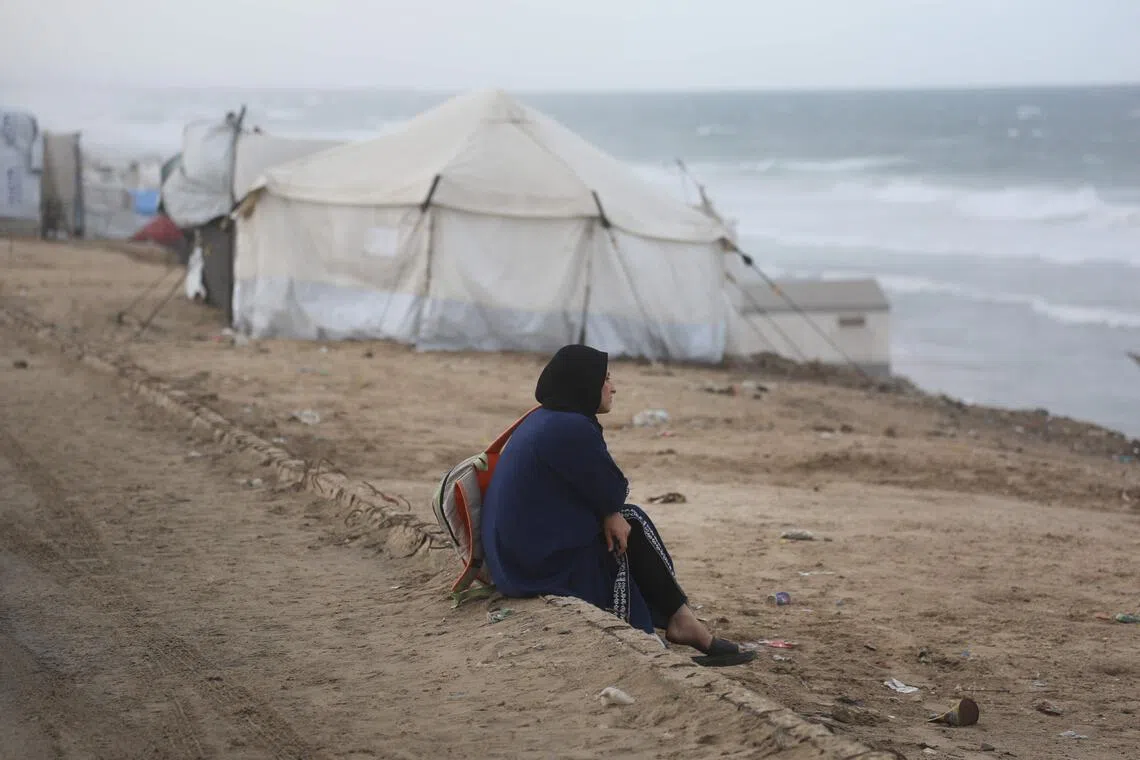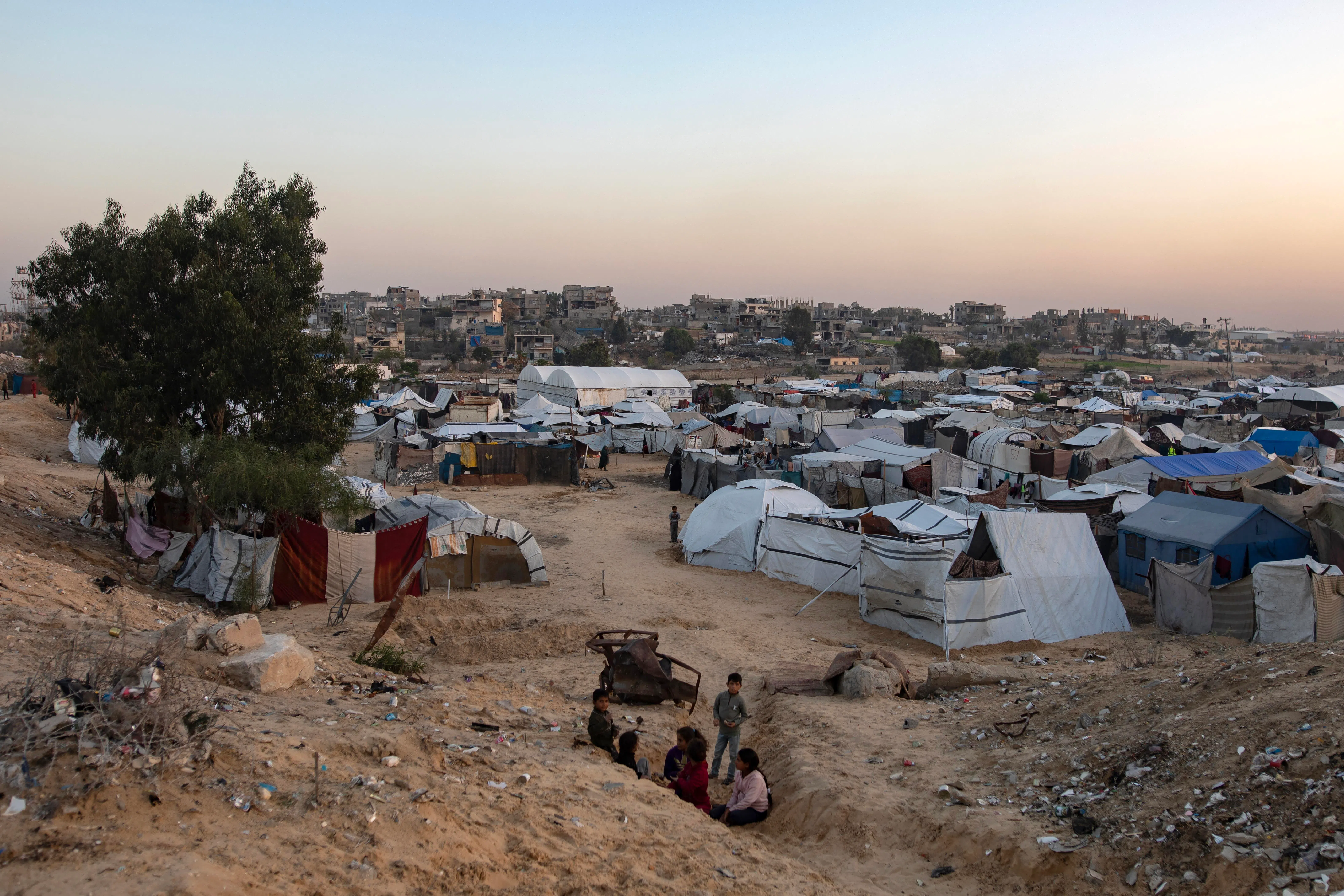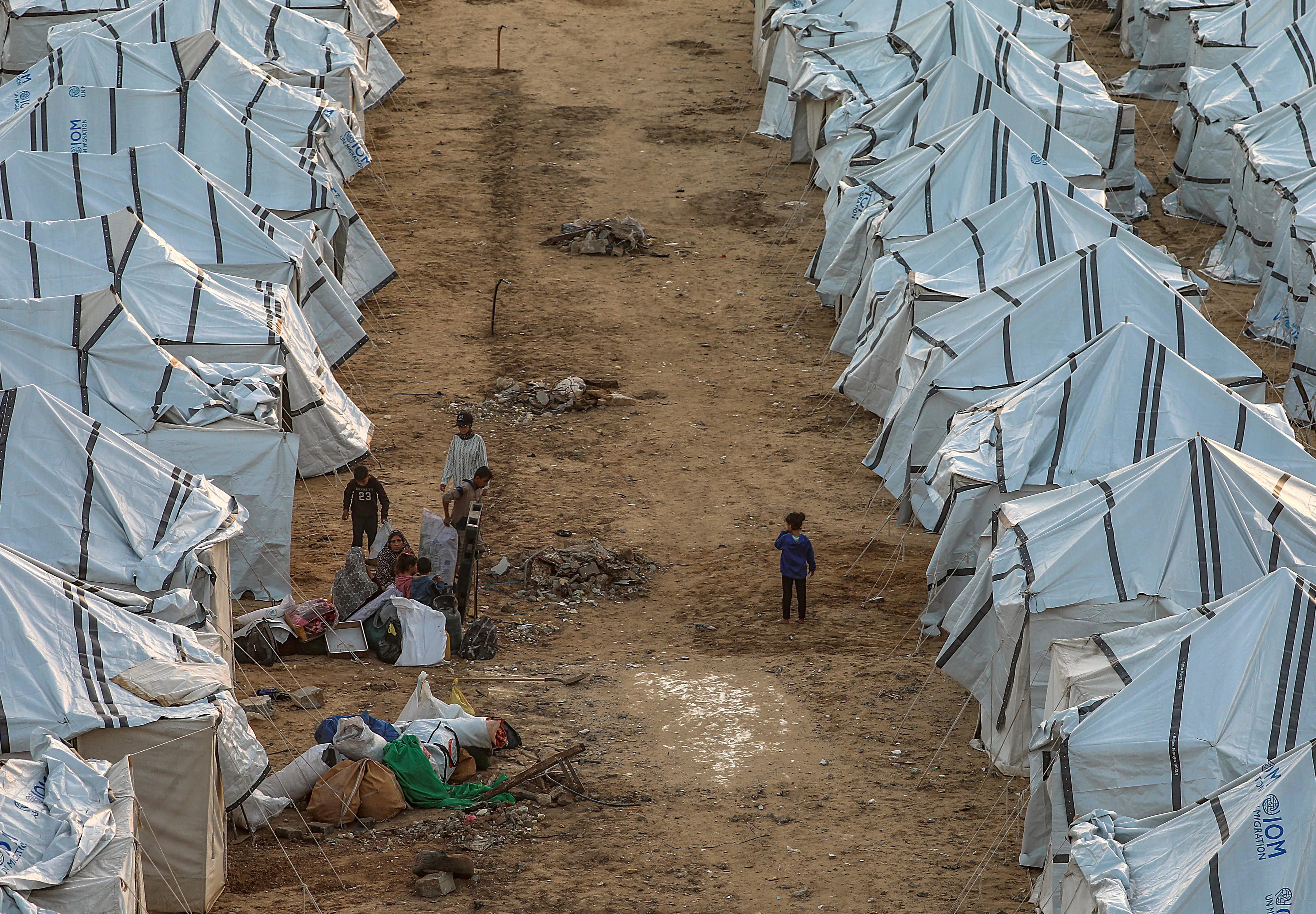Gaza storms bring flooding, sewage and misery in tent camps
Sign up now: Get ST's newsletters delivered to your inbox

A displaced Palestinian woman sitting on the beach near tents in the central Gaza Strip, on Nov 15, 2025, as a low-pressure system impacts the area.
PHOTO: AFP
Follow topic:
- Recent heavy rain and storm surges have devastated Gazan tent camps, destroying shelters and possessions, and worsening already dire conditions for displaced people.
- The Hamas-run Gaza government estimates US$4.5 million in losses; local aid groups say 300,000 new tents are needed to address the widespread destruction.
- Aid agencies like Unicef are calling for increased aid access, as existing supplies run out, warning of disease and malnutrition risks due to the unsanitary conditions.
AI generated
GAZA/CAIRO - Crammed into flimsy tent camps hard up against the seashore, Gazans have been flooded by heavy rain and storm surges in recent days, destroying some shelters, soaking mattresses and blankets and bringing new misery even after a ceasefire.
The Hamas-run Gaza government has estimated losses from the stormy weather
Nearly all Gazans were forced from their homes during more than two years of Israel’s assault on the tiny, crowded enclave, triggered by the Hamas attack
For Mr Abu Mohammed al-Qarra, the rain and cold have been devastating, with water coming into his family’s tent on a beach just 20m from the waves, drenching their possessions and forcing them to spend a night frantically moving their things.
“There is no warmth, or anything. I have been up since five in the morning, and (now) I am at my neighbours’ place because I want to (rest) and forget the cold and the things that we are suffering from,” he said.
The al-Qarra family ended up in the southern Gaza camp area of al-Mawasi in the spring after an earlier truce collapsed and Israel’s military told civilians to head there, but struggled to find any remaining space to pitch their tent.
Eventually, they settled on a spot close up against the sea, protected from surges by only a small sand wall maintained by the families living in that area.
“We were there in the middle of the night, moving and removing our clothes, they got wet, and our mattresses and our pillows. Everything,” he said.
The Gaza government media office head, Mr Ismail al-Thawabta, said flooding had destroyed more than 22,000 tents along with tarpaulins, mattresses and cooking equipment amounting to more than US$2 million of damage. Emergency shelters also collapsed in areas, turning camps into pools of water and mud, he said.
Further expensive damage also hit water and sanitation systems including temporary water lines and sewage pits, as well as small solar installations that provide nearly all the electricity Gazans rely on.
Unicef spokesperson Tess Ingram said the agency’s stocks of shelter supplies for families would be depleted within days and urged Israeli authorities to allow more in as soon as possible.
Gaza authorities say Israel is not letting in as much aid as was promised under the ceasefire deal. Aid agencies say Israel is stopping many required items from entering.
Israel says it is complying fully with its obligations under the truce deal and that it does not stop any aid entering Gaza.

Displaced Palestinian families living in an informal camp in the southern Gaza Strip.
PHOTO: EPA
Surging gastric illness
“Without those supplies children risk further suffering from that deadly combination of cold and wet weather, poor sanitation, which results in the spread of disease, and of course the malnutrition which is persistent,” Ms Ingram said.
Even further inland in Gaza the rainfall has created major problems. Most people sheltering in tents have no proper toilet or sewage facilities but rely on small cesspits dug near their tents, which overflow in heavy rain.
Most people also live near unregulated garbage heaps because landfills and other facilities are inaccessible or destroyed.
Already overstretched hospitals have repeatedly warned that they are coping with surging rates of gastric illness and skin diseases due to the crowded and unsanitary conditions made worse by widespread malnutrition that has weakened immune systems.
Large pools used to store rainwater before the war have filled with sewage and, with pipes and pumping systems smashed or damaged, risk overflowing into surrounding crowded areas of tents. REUTERS

Around 1.9 million people in Gaza, nearly 90 per cent of the population, have been displaced since the Israel-Hamas conflict began in October 2023, according to the UN.
PHOTO: EPA

